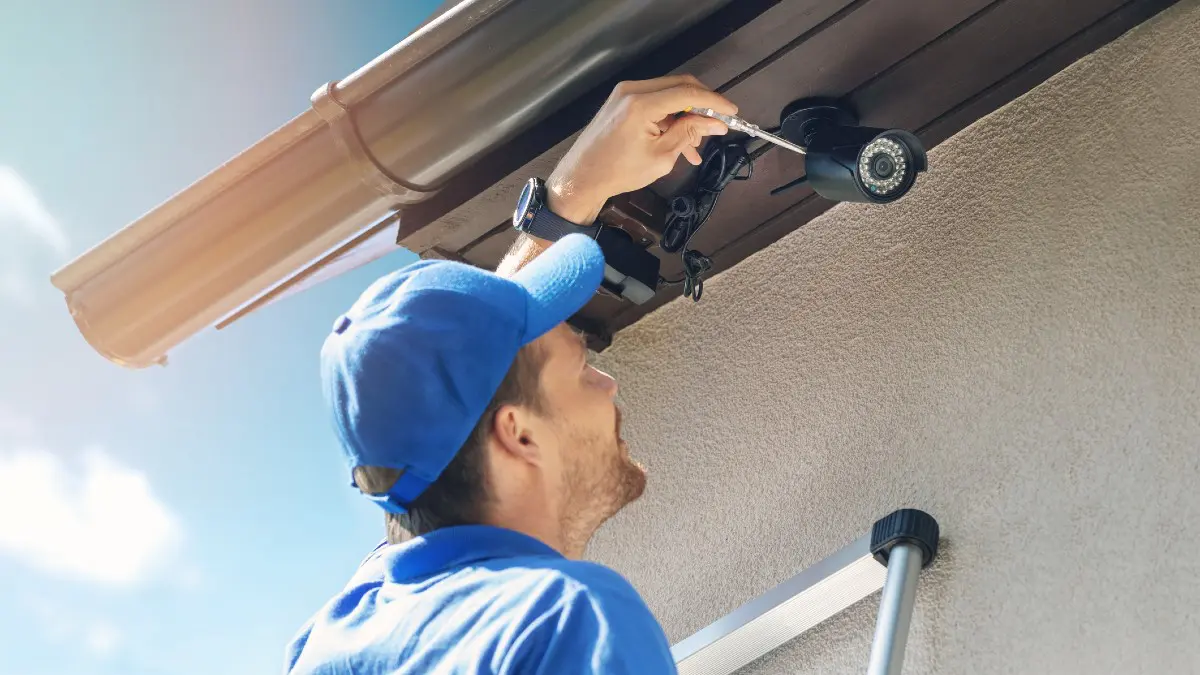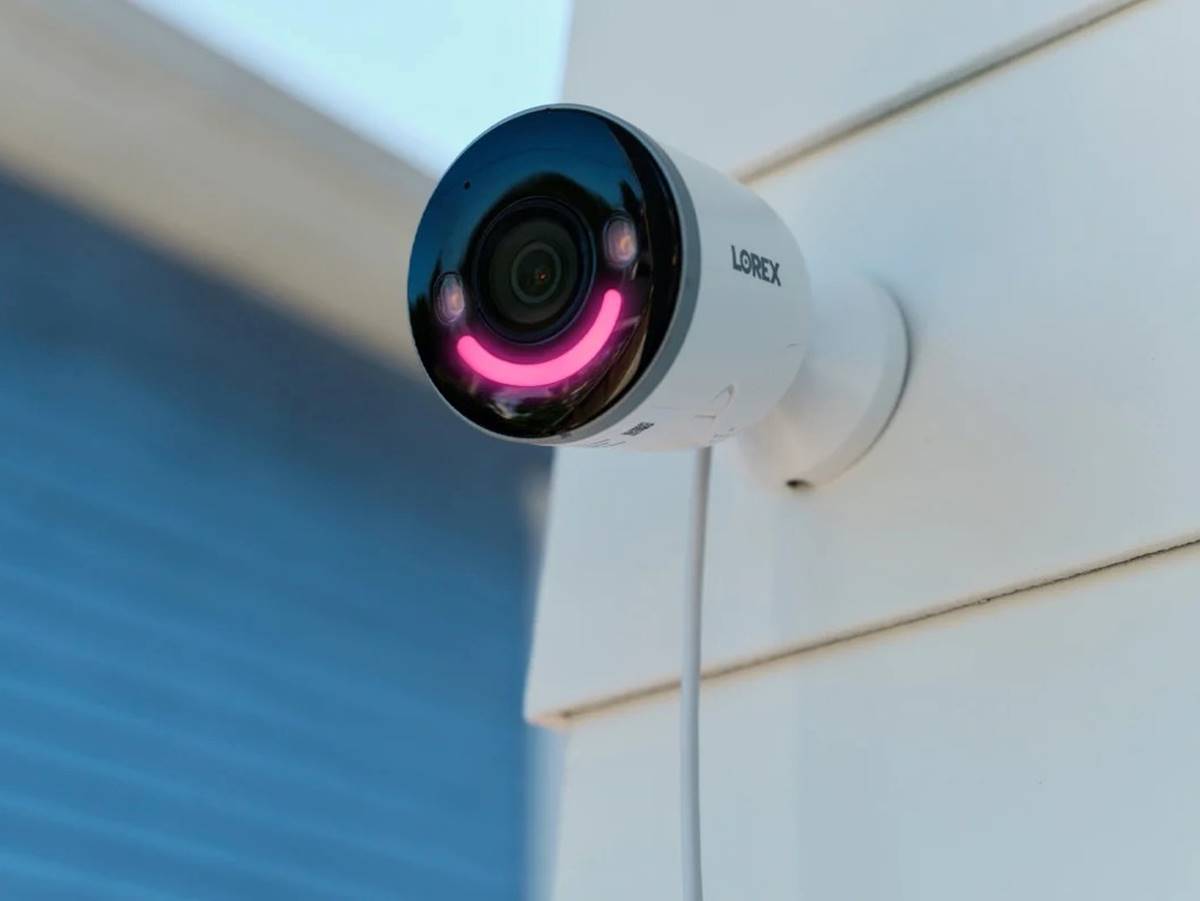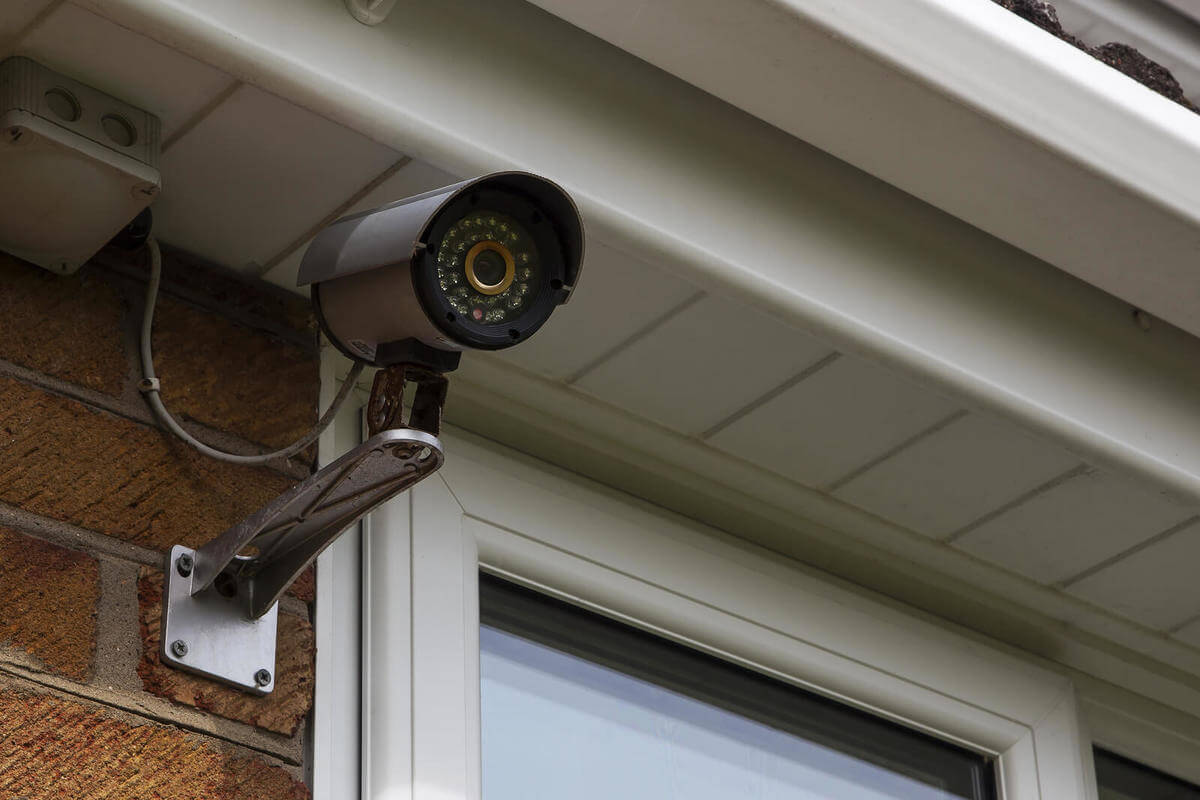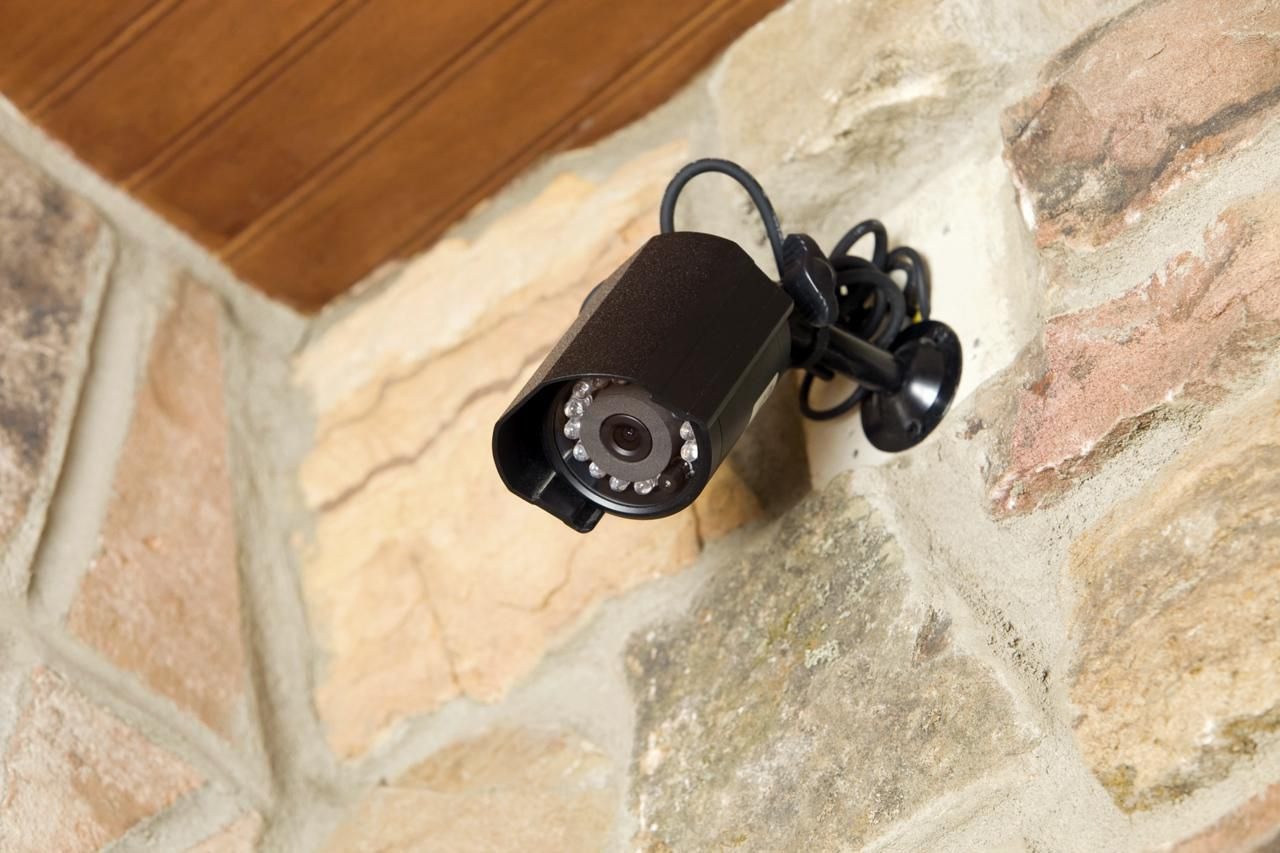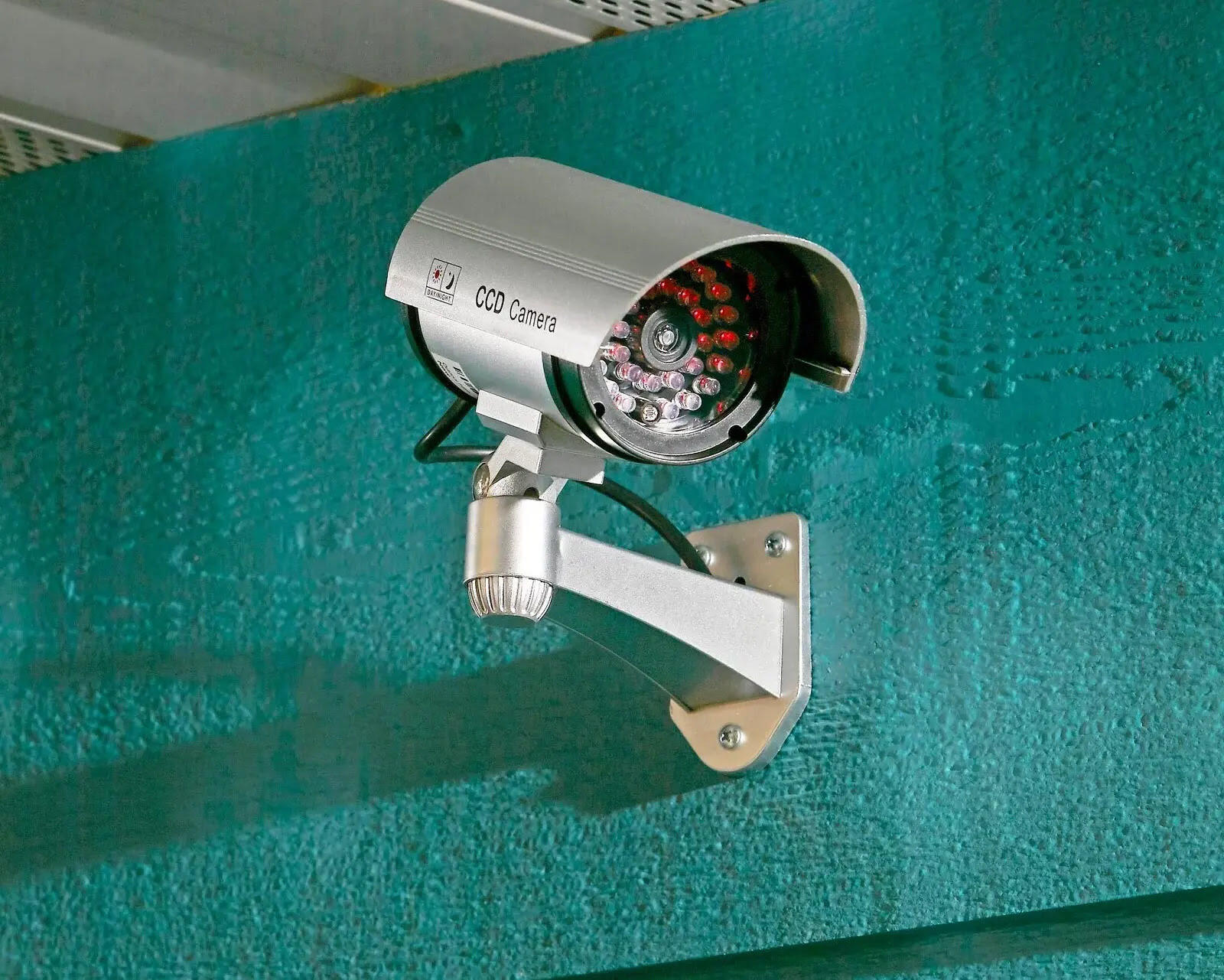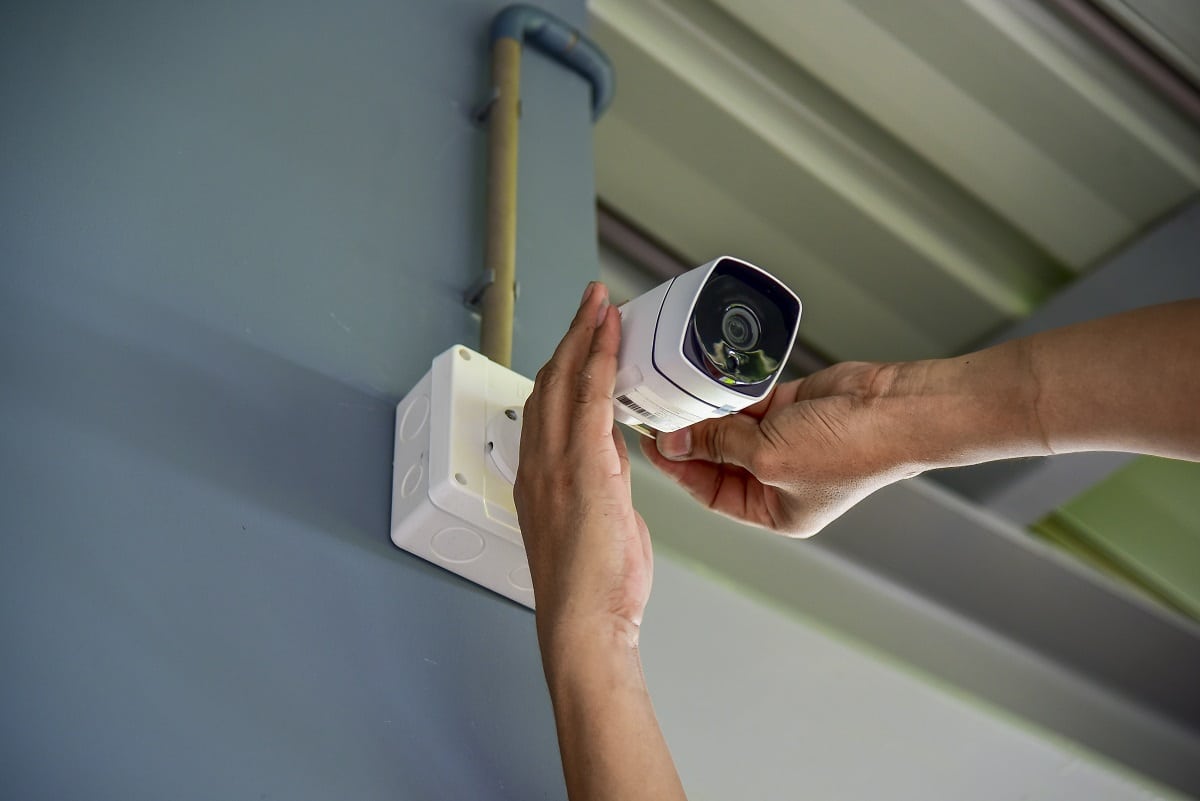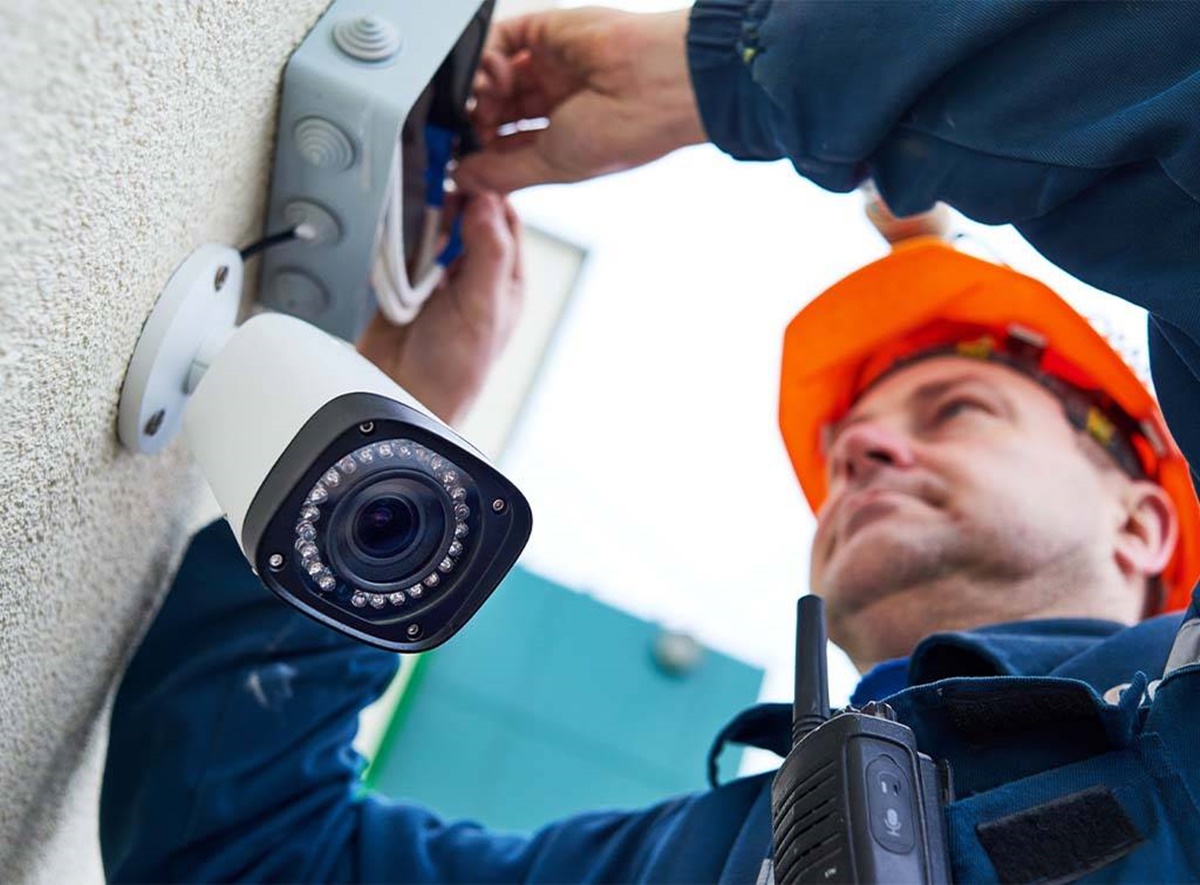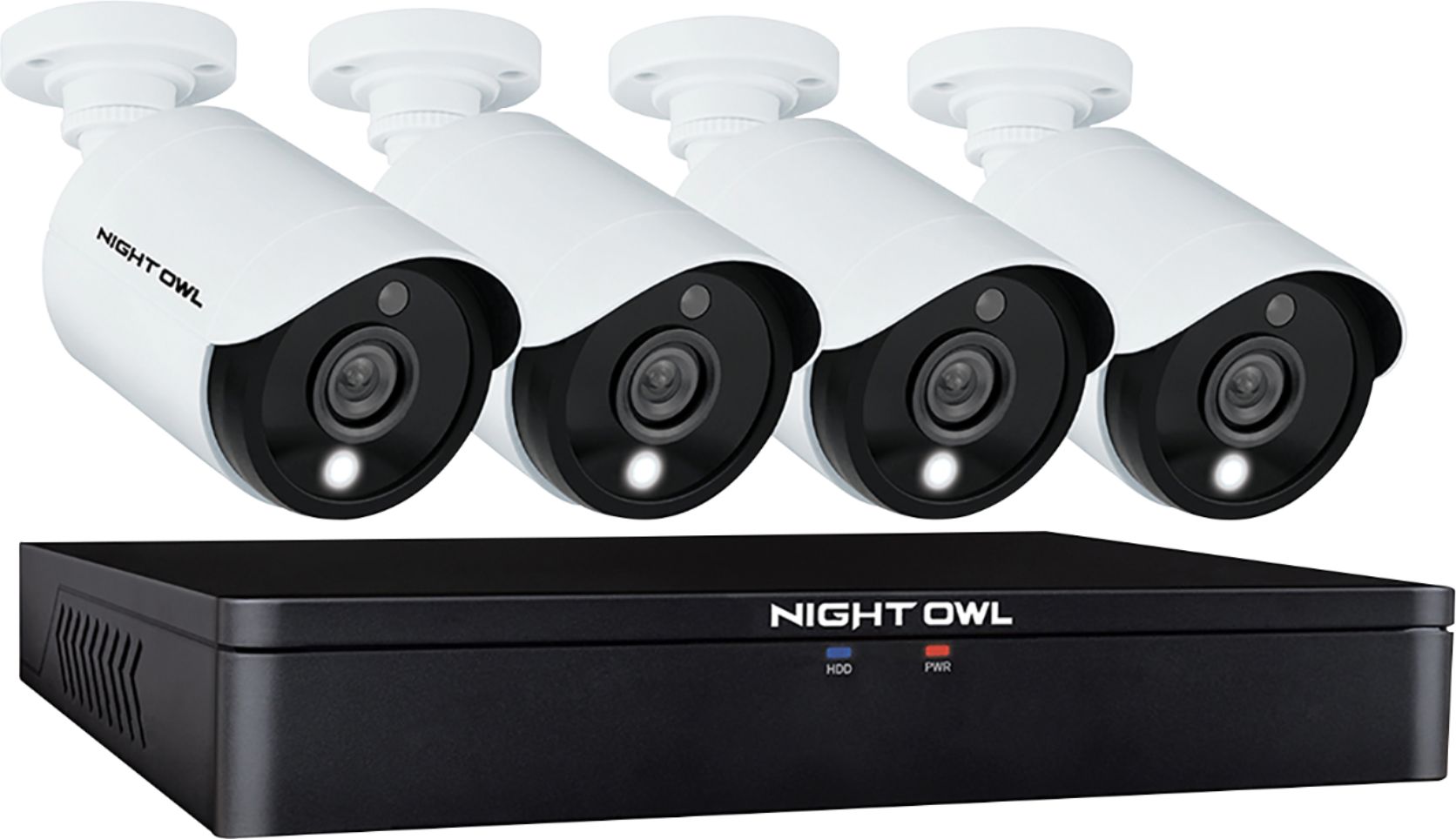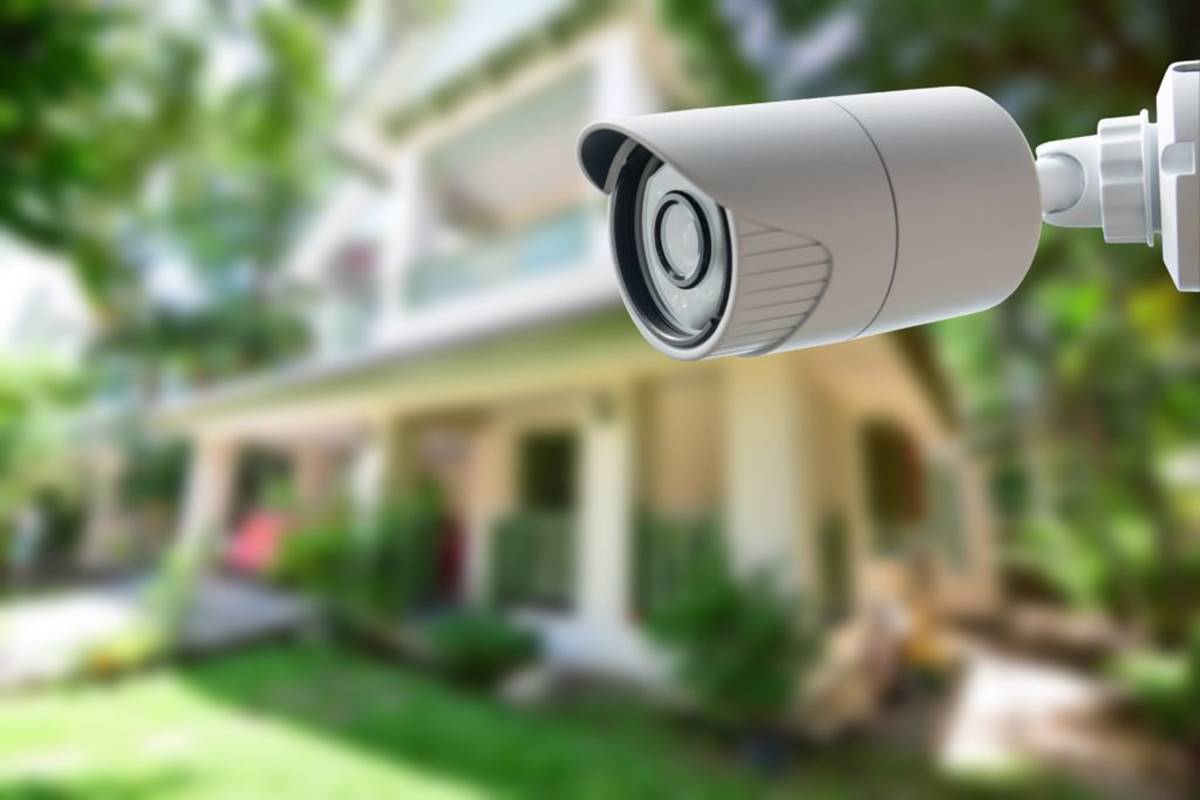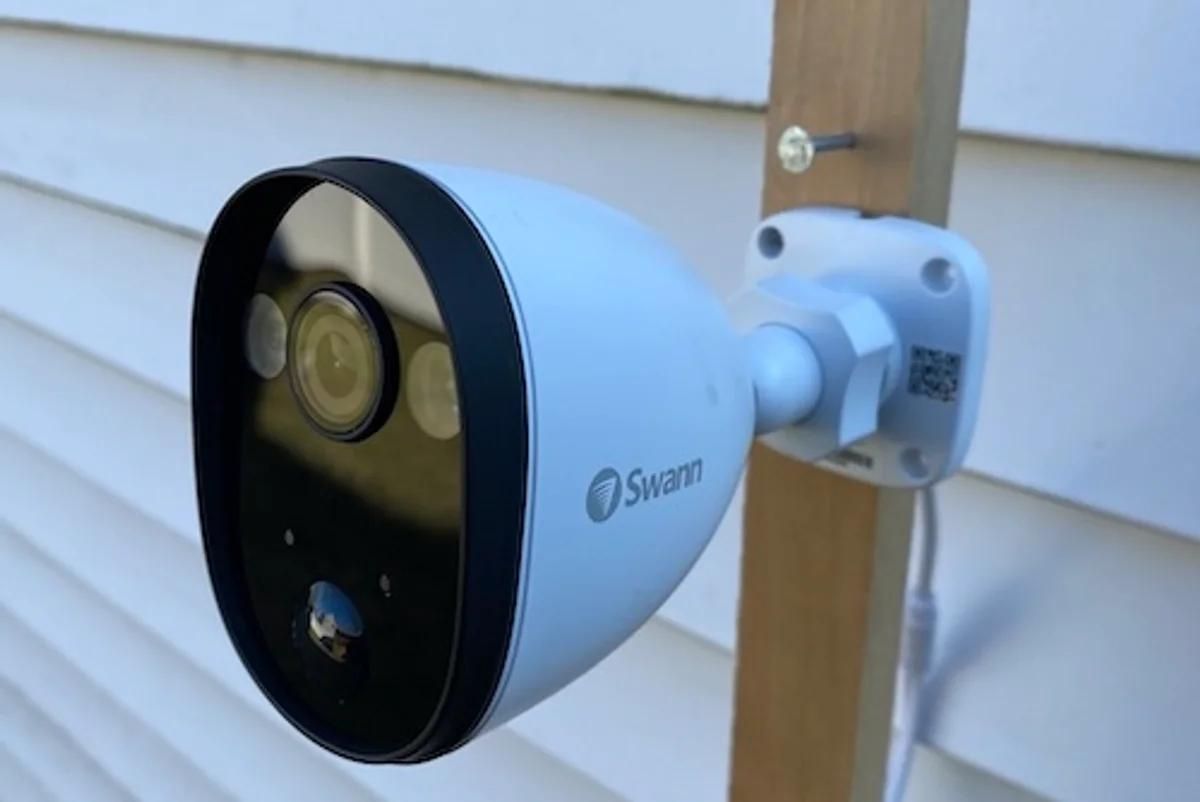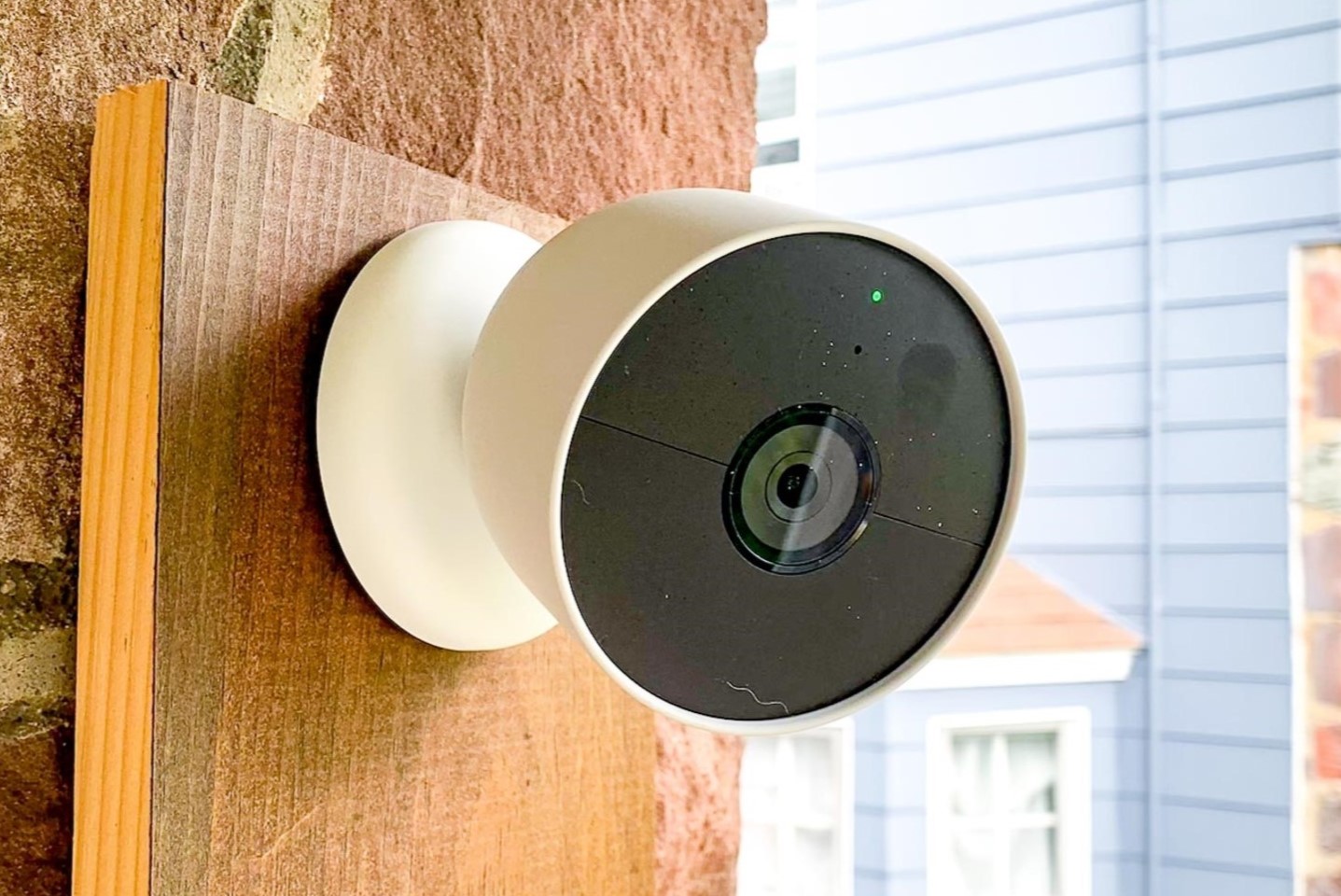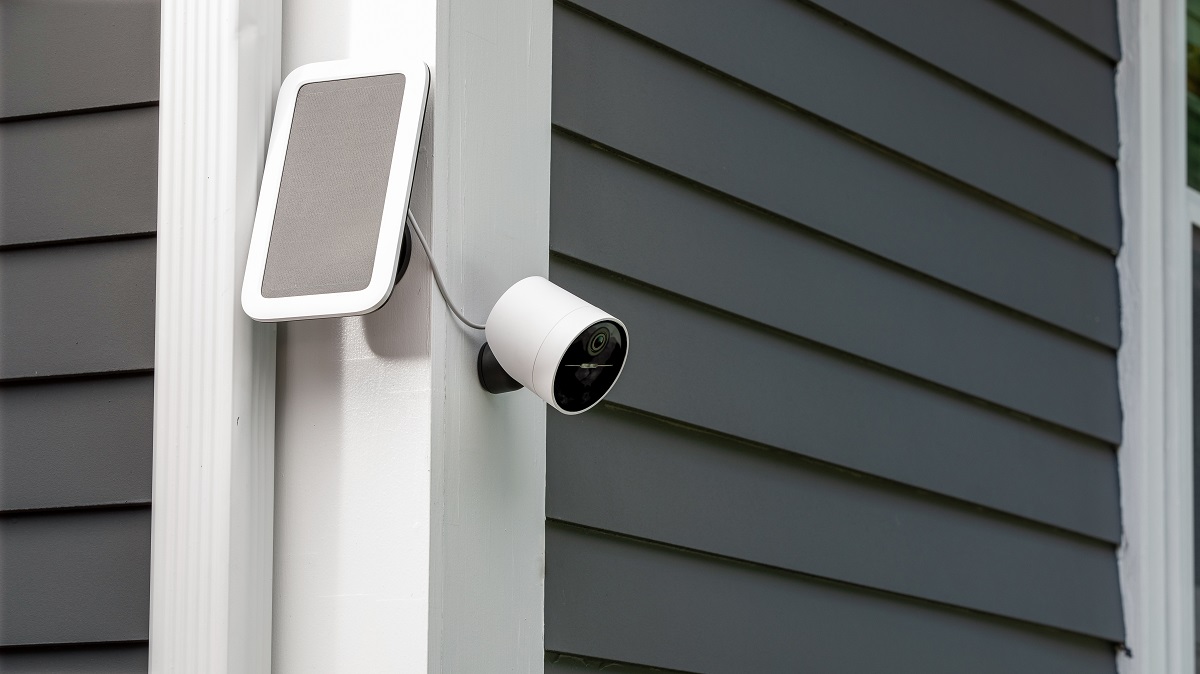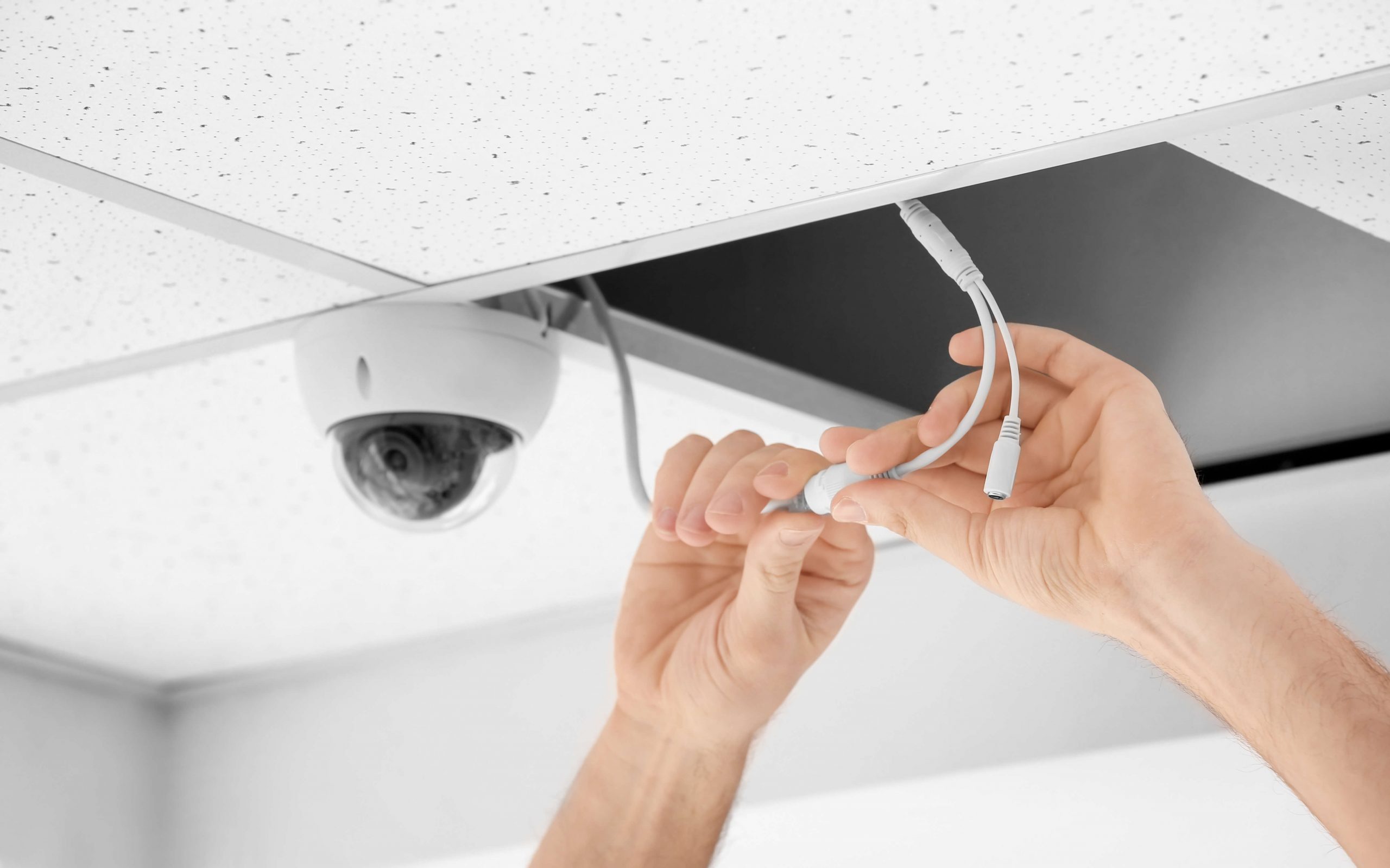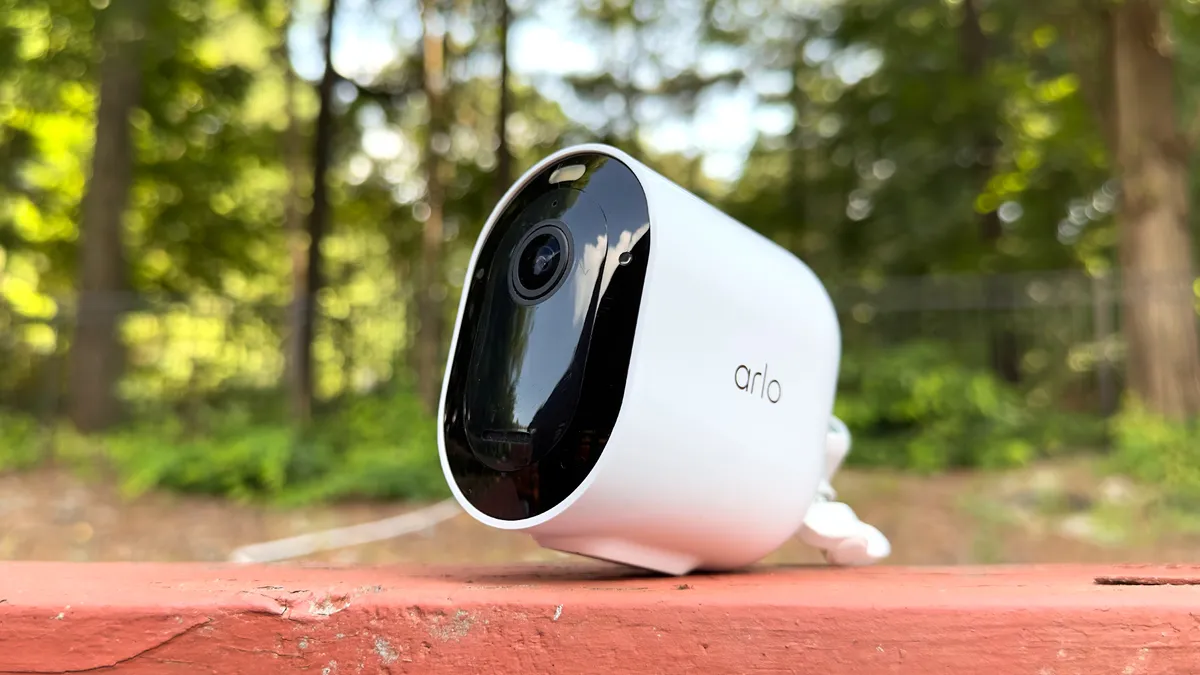Home>Home Security and Surveillance>How To Install Wired Outdoor Security Cameras
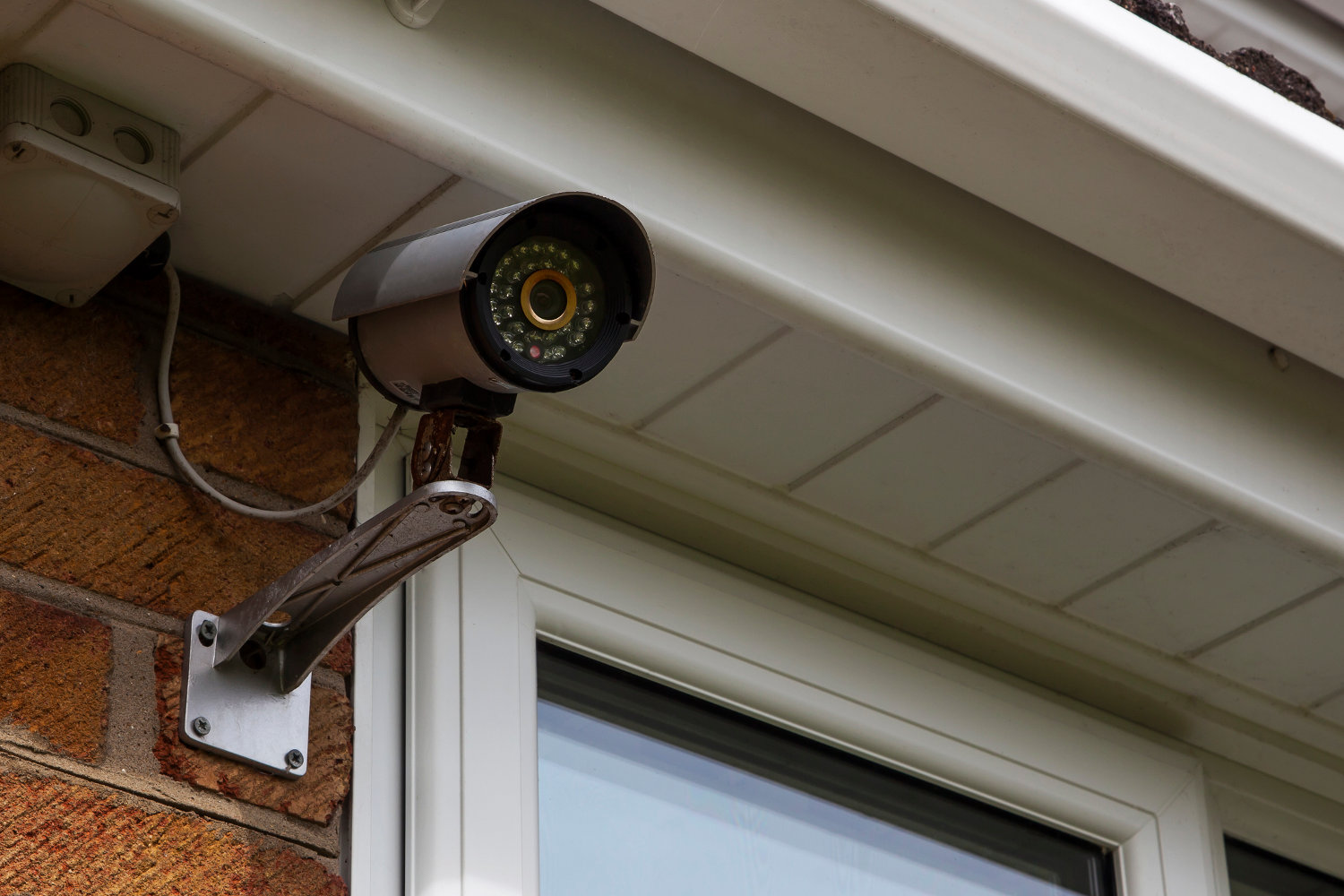

Home Security and Surveillance
How To Install Wired Outdoor Security Cameras
Modified: March 6, 2024
Learn how to install wired outdoor security cameras for your home security and surveillance. Step-by-step guide and tips for setting up your own surveillance system.
(Many of the links in this article redirect to a specific reviewed product. Your purchase of these products through affiliate links helps to generate commission for Storables.com, at no extra cost. Learn more)
Introduction
Welcome to our comprehensive guide on how to install wired outdoor security cameras. In today’s rapidly changing world, ensuring the safety and security of our homes has become more important than ever. With advancements in technology, home security systems have become more accessible and affordable, making it easier for homeowners to take the necessary steps to protect their properties and loved ones.
Installing wired outdoor security cameras is a popular and effective way to increase the security of your home. Not only do they act as a deterrent to potential intruders, but they also provide real-time monitoring and a valuable record of any suspicious activity. In this guide, we will take you through the step-by-step process of installing wired outdoor security cameras, empowering you to take control of your home security.
Before we dive into the installation process, it’s important to understand the benefits of wired outdoor security cameras. While wireless options offer convenience, wired cameras provide a more reliable and consistent connection, ensuring uninterrupted surveillance. Additionally, with wired cameras, you don’t have to worry about changing batteries or connecting to your home’s Wi-Fi network.
Another advantage of wired cameras is their ability to handle extreme weather conditions. From scorching heat to freezing cold, wired cameras are designed to withstand the elements, providing optimal performance and longevity.
Now that we’ve covered the basics, let’s move on to the practical steps involved in installing wired outdoor security cameras. We recommend reading through the entire guide before starting the installation process to ensure you have a clear understanding of each step and the required tools and materials.
Key Takeaways:
- Installing wired outdoor security cameras involves determining optimal placement, gathering tools, mounting brackets, running wires, connecting to DVR, testing, and securing wiring. It’s a comprehensive process that enhances home security.
- Properly installed wired outdoor security cameras provide peace of mind and deter potential intruders. Regular maintenance and monitoring ensure continued functionality, contributing to a safe and secure home.
Read more: How To Wire Outdoor Security Cameras
Step 1: Determine the Placement Locations
The first step in installing wired outdoor security cameras is to determine the optimal placement locations. Proper camera placement is crucial for capturing the necessary angles and maximizing the surveillance coverage of your property. Here are some key factors to consider when determining the placement locations:
- Entry Points: Start by identifying the entry points of your home, such as doors, windows, and garage entrances. These are typically the areas where potential intruders are most likely to attempt access. Placing cameras near these entry points will provide a clear view of anyone approaching or attempting to break in.
- Garden and Yard: Assess your outdoor space, including the garden, yard, and pathways. These areas are vulnerable to trespassers and provide potential hiding spots, so it’s essential to have cameras positioned to monitor and capture any suspicious activity.
- High-Value Areas: Identify any high-value areas that you want to give extra attention to, such as outdoor patios, swimming pools, or outdoor storage sheds. Installing cameras near these locations will help protect your valuable belongings from theft or vandalism.
- Line of Sight: Ensure that the cameras have a clear line of sight, avoiding any obstructions like trees or shrubs that may hinder the view. Clear visibility is crucial for capturing accurate footage.
- Lighting: Consider the lighting conditions in the areas where you plan to install the cameras. Adequate lighting is essential for capturing clear images, especially at night. If the area is poorly lit, you may need to install additional security lighting or choose cameras with night vision capabilities.
- Power Source: Take into account the availability of power sources near the desired camera locations. Wired cameras require a power source for operation, so ensure that there are outlets or electrical wiring accessible for connecting the cameras.
Once you have identified the optimal placement locations, mark them on a diagram of your property for reference during the installation process. This will help you visualize the camera positions and ensure comprehensive coverage of your home.
With Step 1 complete, you are now ready to move on to Step 2: Gather the Necessary Tools and Materials.
Step 2: Gather the Necessary Tools and Materials
Before you begin the installation process, it’s crucial to gather all the necessary tools and materials. Having everything prepared beforehand will make the installation smoother and more efficient. Here is a list of the essential tools and materials you will need:
- Security Cameras: Purchase wired outdoor security cameras that suit your needs. Consider factors such as camera resolution, field of view, weatherproof rating, and night vision capabilities. Make sure to choose cameras that are compatible with your preferred DVR (Digital Video Recorder) system.
- DVR System: Invest in a high-quality DVR system to connect and record footage from your security cameras. Select a DVR that supports the number of cameras you plan to install and offers features such as remote viewing capabilities and motion detection.
- Camera Mounting Brackets: Depending on the camera model, you may need to purchase additional mounting brackets to secure the cameras in the desired locations. These brackets ensure stability and proper positioning of the cameras.
- Power Adapters and Cables: Check if your security camera system requires power adapters and cables. Ensure that you have the correct length and type of cables to connect the cameras to the DVR and power source.
- Drill: A power drill with drill bits of various sizes will be necessary for mounting the camera brackets and running the wires through walls or ceilings.
- Screwdriver: A screwdriver is essential for securing the camera mounting brackets and making any adjustments during the installation process.
- Wire Cutters and Strippers: These tools will be needed to cut and strip the wires for proper connectivity.
- Ladder: Depending on the height of your installation locations, a ladder may be required to safely reach and install the cameras.
- Cable Clips and Ties: These accessories help secure and organize the camera wires, preventing them from hanging loose or getting entangled.
- Markers and Labels: Use markers and labels for identifying the camera cables and ensuring easy troubleshooting or maintenance in the future.
Gather all the necessary tools and materials and ensure that they are in good working condition before you start the installation process. Being prepared will save you time and prevent any unexpected delays or frustrations.
With Step 2 complete, you are now ready to move on to Step 3: Mount the Camera Brackets.
Step 3: Mount the Camera Brackets
Now that you have gathered all the necessary tools and materials, you can proceed to mount the camera brackets. Properly installing the brackets ensures the stability and optimal positioning of the security cameras. Follow these steps to mount the camera brackets:
- Select the Mounting Locations: Referencing your diagram from Step 1, identify the predetermined placement locations for the cameras. Ensure that the area is clear of any obstructions and provides a clear line of sight.
- Position the Brackets: Place the camera brackets on the designated spots and use a pencil or marker to mark the drilling holes. Make sure the brackets are level and aligned properly.
- Drill the Holes: Using a power drill and the appropriate drill bit, carefully drill the marked holes on the wall or surface. Be mindful of any wiring or plumbing behind the walls to avoid damaging them.
- Secure the Brackets: Insert wall anchors into the drilled holes (if necessary) and then use screws or bolts to secure the camera brackets to the wall. Ensure that the brackets are firmly attached and can support the weight of the cameras.
- Adjust the Angles: Depending on your preferred camera angle, adjust the brackets to the desired position. Most brackets allow for tilting and swiveling, enabling you to achieve the best camera angle for surveillance coverage.
- Tighten the Screws: Once you have positioned the brackets, use a screwdriver or wrench to tighten the screws securely. This will prevent any movement or wobbling of the brackets.
Repeat the above steps for each camera bracket, ensuring that all brackets are securely mounted and aligned properly. Double-check the angles and ensure that the cameras have a clear line of sight to the desired surveillance areas.
With Step 3 complete, you are now ready to move on to Step 4: Run the Wires.
Step 4: Run the Wires
With the camera brackets securely mounted, it’s time to run the wires to connect the cameras to the DVR system. Properly running the wires ensures a clean and organized installation while maintaining a reliable connection. Follow these steps to run the wires:
- Plan the Cable Path: Determine the most efficient and discreet path for running the camera wires. Consider hiding the wires along walls, running them through attics or crawl spaces, or using conduit to protect the wires from the elements.
- Measure and Cut the Wires: Measure the distance from each camera to the DVR system and cut the camera wires accordingly. It’s essential to have the correct length of wires to ensure a neat and organized installation.
- Thread the Wires: Carefully thread the camera wires through the selected cable path. Use existing openings or create discreet holes in walls or ceilings to pass the wires through.
- Secure the Wires: Use cable clips or ties to secure the wires along the cable path, ensuring that they are neatly organized and won’t hang loosely. This step helps prevent accidental damage or tripping hazards.
- Connect the Wires: At each camera location, connect the corresponding wires to the designated terminals on the camera brackets. Follow the manufacturer’s instructions for proper wire connection.
- Label the Wires: To facilitate future maintenance or troubleshooting, label each wire with their corresponding camera location. This step will save time and prevent confusion when identifying specific cameras.
- Run the Wires to the DVR: Continue running the camera wires along the cable path until you reach the location of the DVR system. Ensure that the wires are properly secured and organized throughout the entire length.
- Connect the Wires to the DVR: At the DVR system, connect each camera wire to the corresponding video input terminals. Follow the provided instructions to ensure proper connection and compatibility.
- Power the Cameras: Plug in the power adapters to an electrical outlet or power source, and connect the camera wires to the appropriate power terminals on the DVR system. This step will provide the necessary power supply for the cameras to function.
Double-check all wire connections to ensure they are secure and properly connected. Pay attention to any specific instructions provided by the camera and DVR system manufacturers. With Step 4 complete, you are now ready to move on to Step 5: Connect the Cameras to the DVR.
When installing wired outdoor security cameras, make sure to carefully plan the placement and routing of the cables to ensure they are hidden and protected from the elements. This will help prevent damage and ensure a reliable connection.
Step 5: Connect the Cameras to the DVR
With the camera brackets securely mounted and the wires properly run, it’s time to connect the cameras to the DVR system. This step allows you to establish the connection and start capturing the surveillance footage. Follow these steps to connect the cameras to the DVR:
- Locate the Video Inputs: Identify the video input ports on the back of the DVR system. These ports are typically labeled with numbers or camera indicators, corresponding to each camera’s placement location.
- Match Camera Channels: Referencing your diagram, determine which camera wire corresponds to each camera channel on the DVR. Ensure that the camera channels on the DVR match the placement locations of the cameras.
- Connect the Video Cables: Attach the video cables from each camera to their respective video input ports on the DVR. Ensure a secure and tight connection to maintain a reliable video signal.
- Connect the Power Cables: Plug in the power adapters of each camera into the appropriate power terminals on the DVR. Ensure that the power cables are securely connected and provide power to the cameras.
- Switch on the DVR: Once all the camera connections are established, switch on the DVR system. Follow the manufacturer’s instructions for powering up the system and accessing the settings.
- Configure the DVR: Access the DVR system’s settings and navigate to the configuration menu. Follow the instructions provided by the manufacturer to set up the cameras, adjust the recording settings, and enable any desired features such as motion detection or scheduling.
- Test the Camera Feeds: After configuring the DVR, monitor the camera feeds to ensure that each camera is displaying a clear and stable image on the DVR’s screen. Make any necessary adjustments to the camera angles or settings for optimal surveillance coverage.
- Check the Recording Functionality: Verify that the DVR system is recording the camera feeds properly. Test the recording functionality by performing a test run and reviewing the playback. Ensure that the footage is being saved and can be accessed for future reference.
Double-check all camera connections and ensure that the camera feeds are visible on the DVR system’s screen. Familiarize yourself with the DVR’s interface and settings to maximize its capabilities. With Step 5 complete, you are now ready to move on to Step 6: Test the Cameras and Make Adjustments.
Step 6: Test the Cameras and Make Adjustments
Now that the cameras are connected to the DVR system, it’s time to test their functionality and make any necessary adjustments. This step ensures that the cameras are capturing the desired surveillance footage and allows you to fine-tune their settings for optimal performance. Follow these steps to test the cameras and make adjustments:
- Monitor Live Feeds: Access the live camera feeds on the DVR system’s screen and observe the real-time footage from each camera. Check if the cameras are capturing the desired areas and if the quality of the images is satisfactory.
- Check Night Vision: If your cameras have night vision capabilities, test them in low-light conditions or darkness. Ensure that the night vision mode provides clear and detailed footage, allowing for effective surveillance even in low-light situations.
- Adjust Camera Angles: Evaluate the camera angles and make any necessary adjustments. Ensure that the cameras provide a clear view of the designated areas without any obstructions. Tilt, pan, or rotate the cameras as needed to achieve the desired coverage.
- Test Motion Detection: If your DVR system has motion detection capabilities, test this feature by moving in front of the cameras’ field of view. Verify that the system correctly detects and records any motion, generating alerts or triggering specific actions as configured.
- Review Playback: Access the DVR system’s playback function and review the recorded footage. Check for any issues such as image quality, skipped frames, or missing recordings. This step ensures that the cameras are recording and saving the surveillance footage effectively.
- Make Adjustments: Based on your observations during the testing phase, make any necessary adjustments to the camera settings. This may include fine-tuning the camera angles, adjusting recording settings, or configuring motion detection sensitivity. Refer to the manufacturer’s instructions for guidance on adjusting specific camera and DVR settings.
- Repeat the Testing Process: After making adjustments, repeat the testing process to ensure that the cameras are now capturing the desired footage and all settings are optimized. Continue monitoring the live feeds, checking night vision, and verifying the functionality of motion detection.
Continue making adjustments and testing until you are satisfied with the performance and settings of the cameras. Taking the time to test and make necessary adjustments will ensure that your wired outdoor security cameras are operating at their best. With Step 6 complete, you are now ready to move on to Step 7: Secure the Wiring and Complete the Installation.
Step 7: Secure the Wiring and Complete the Installation
With the cameras tested and adjusted, it’s time to secure the wiring and complete the installation. This final step ensures that the wiring is organized, protected, and concealed, providing a clean and professional-looking installation. Follow these steps to secure the wiring and complete the installation:
- Organize the Wires: Ensure that all camera wires are neatly organized and bundled together. Use cable clips or ties to secure the wires along the cable path and prevent them from becoming tangled or hanging loosely.
- Conceal the Wiring: Hide the camera wires using various concealment methods, such as running them through walls, ceilings, or conduit. This step not only improves the aesthetics of the installation but also protects the wires from damage and exposure to the elements.
- Secure the Wiring: Use additional cable clips or ties to secure the wiring along the cable path, ensuring that it is firmly in place. This step helps prevent any accidental disconnection or damage to the wiring in the future.
- Cover Exposed Wires: If any sections of the wiring are exposed and cannot be fully concealed, consider using wire covers or paintable cable channels to make them less noticeable and blend them into the surrounding environment.
- Trim Excess Wires: If there is any excess length of camera wires, trim them to a suitable length using wire cutters. Leaving too much excess wire can lead to a messy appearance and potential hazards, so ensure that the wires are trimmed appropriately.
- Secure the DVR: Ensure that the DVR system is securely placed or mounted in a safe and accessible location. Consider using brackets or mounting it to a rack for added stability and protection.
- Set Up Remote Viewing: If your DVR system supports remote viewing, follow the manufacturer’s instructions to set it up. This allows you to monitor the camera feeds and access recorded footage from anywhere using a smartphone, tablet, or computer.
- Test the System: Perform a final test of the entire system, including live monitoring, playback, and remote viewing. Ensure that all cameras are functioning correctly, the wiring is secure, and the DVR system is recording and storing the footage as intended.
- Document the Installation: Take photos or video footage of the installed cameras and wiring for future reference or troubleshooting purposes. This documentation will be helpful in case you need to make adjustments or expand your security system in the future.
Congratulations! With Step 7 complete, you have successfully secured the wiring and completed the installation of your wired outdoor security cameras. Take a moment to admire your work and rest assured knowing that you have taken an important step in enhancing the security of your home.
Remember to regularly maintain and check your security cameras to ensure they continue to function optimally. Periodically review the footage, clean the lenses, and check for any signs of damage or malfunction. Your vigilance and proactive maintenance will contribute to a reliable and effective home security system.
We hope this step-by-step guide has been helpful in guiding you through the installation process. Take control of your home security and enjoy the peace of mind that comes with a well-installed and properly functioning wired outdoor security camera system. Stay safe!
If you need any further assistance, feel free to reach out to the manufacturer’s customer support or consult with a professional installer in your area.
Conclusion
Installing wired outdoor security cameras is a crucial step in enhancing the safety and security of your home. By following the step-by-step process outlined in this guide, you have gained the knowledge and skills to install a comprehensive surveillance system that will provide you with peace of mind.
Throughout the installation process, you have learned how to determine the optimal placement locations for your cameras, gather the necessary tools and materials, mount the camera brackets, run the wires, connect the cameras to the DVR system, test the cameras, and make adjustments for optimal performance.
Remember, the placement of your security cameras is crucial in capturing the desired angles and maximizing the surveillance coverage of your property. Additionally, proper cable management and wire concealment contribute to a clean and professional-looking installation.
Regular maintenance and monitoring of your security camera system are essential to ensure its continued functionality. Perform routine checks of the camera feeds, playback recorded footage, and keep an eye on any alerts or notifications generated by your DVR system. This proactive approach will ensure that your home remains protected around the clock.
Lastly, consider enhancing your security system further by integrating additional features such as motion detection, remote viewing capabilities, or expanding the number of cameras to cover more areas of your property. Stay up to date with the latest advancements in security technology to continuously improve your home’s security measures.
By taking the initiative to install wired outdoor security cameras, you have made a significant investment in the safety of your home and loved ones. Enjoy the peace of mind that comes with knowing you have taken a proactive approach to protect your property, deter potential intruders, and have valuable evidence in case of any unusual activities.
Remember, if you ever need assistance or have any questions, don’t hesitate to consult the manufacturer’s customer support or seek advice from professionals in the field. They can provide further guidance and expertise to ensure your security camera system remains efficient and effective for years to come.
Thank you for your dedication to ensuring the security of your home. Stay safe and enjoy the added protection your wired outdoor security cameras provide!
Frequently Asked Questions about How To Install Wired Outdoor Security Cameras
Was this page helpful?
At Storables.com, we guarantee accurate and reliable information. Our content, validated by Expert Board Contributors, is crafted following stringent Editorial Policies. We're committed to providing you with well-researched, expert-backed insights for all your informational needs.
